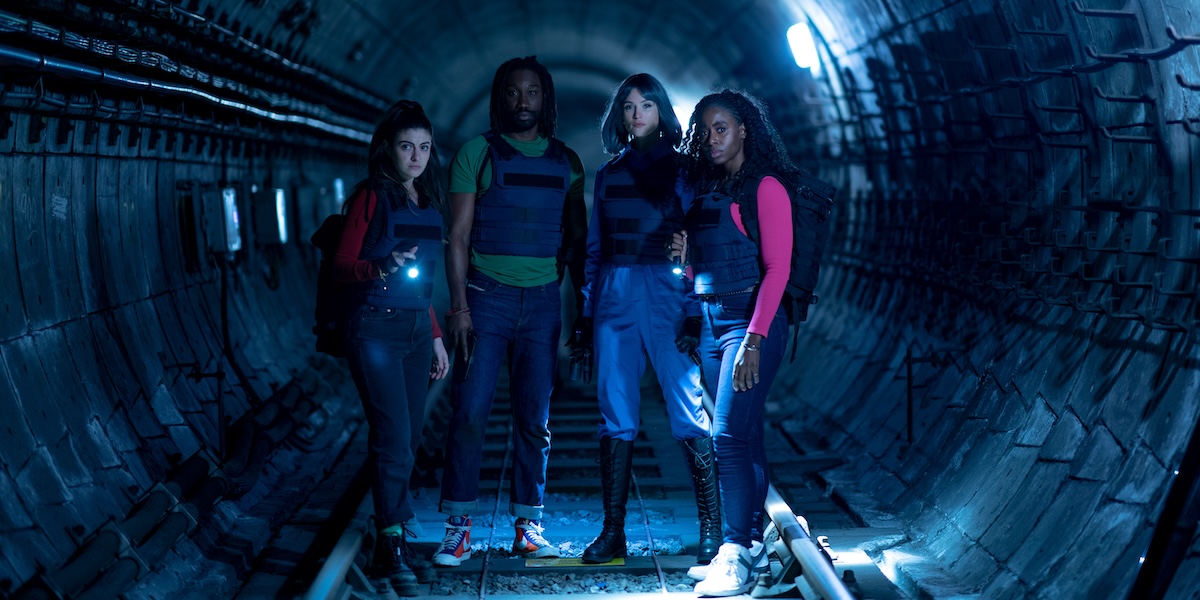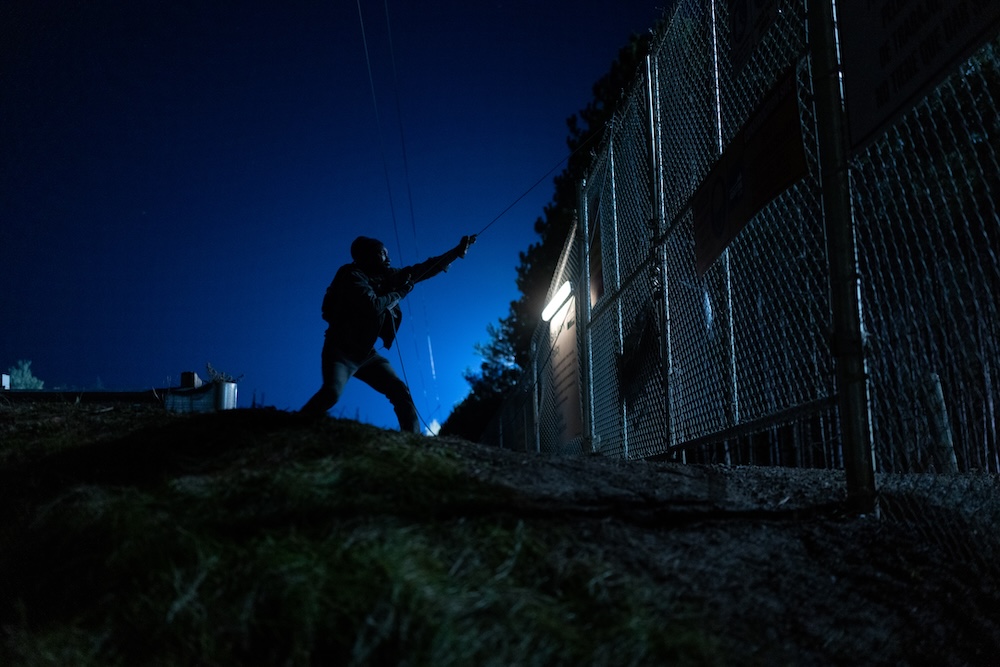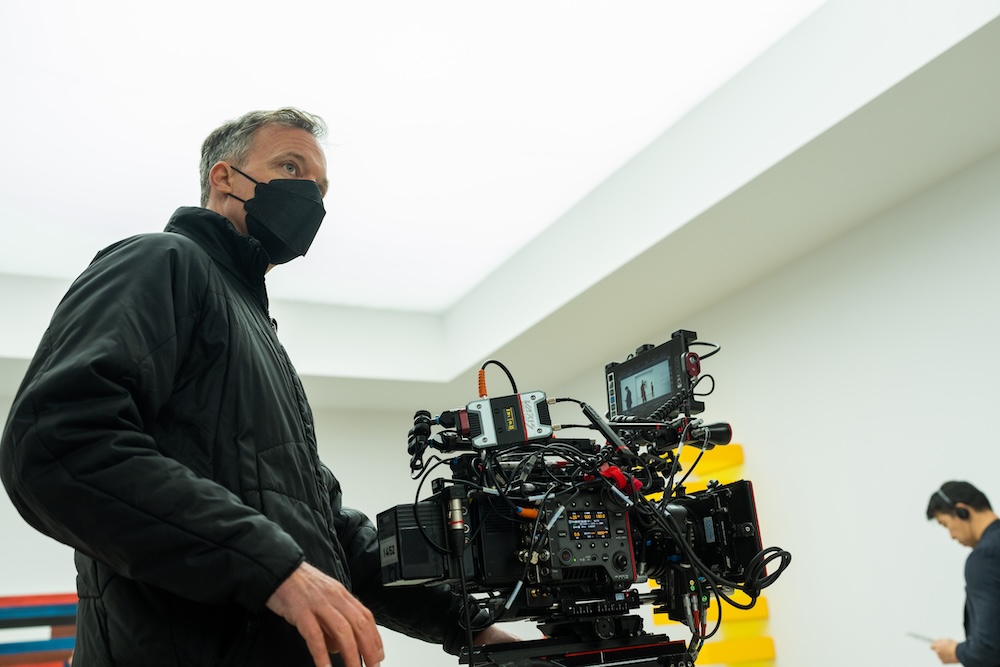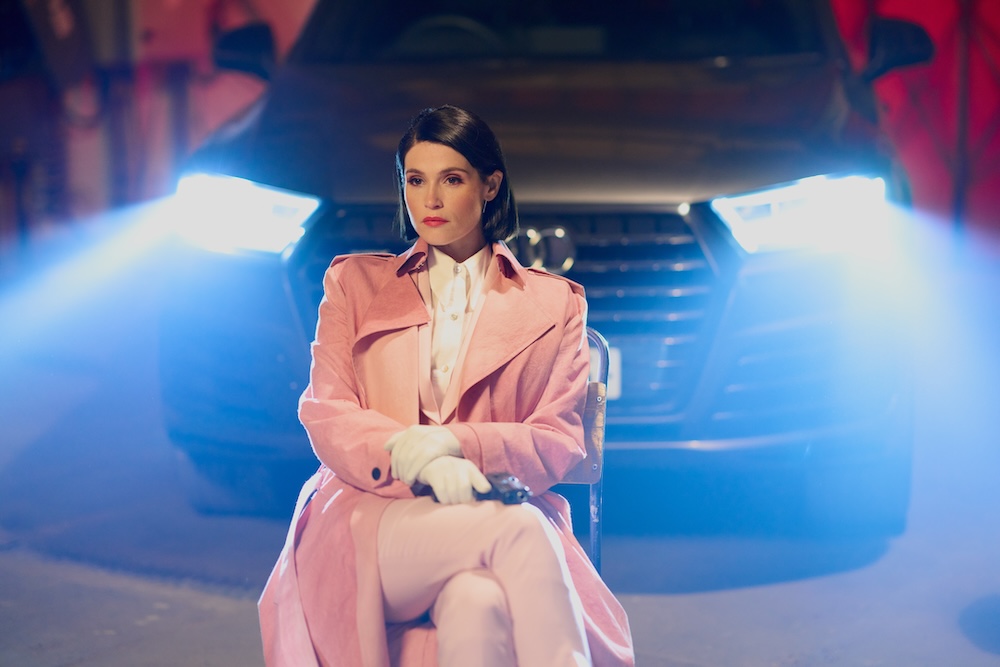
Against all odds: Culprits
Posted on Nov 29, 2023 by Katie Kasperson
Rain, reshoots and Rothko – the team behind heist drama Culprits faced a number of hurdles
Things don’t always go according to plan, as anyone who has worked in production will attest to. From bad weather to scheduling conflicts, each moving part poses a unique problem – even for seasoned pros. Philipp Blaubach, DOP on Disney+ original series Culprits, can testify.
Created by J Blakeson, Culprits follows a group of ex-criminals as they try to lead normal lives – that is, until some of their own are mysteriously murdered. “The series is told not only all over the world, but also in different lives,” explains Blaubach, who’s worked with Blakeson on Gunpowder and The Disappearance of Alice Creed. “You have the life that they live now – a tranquil family life – flash back to the heist, which is ‘then’, and also have this ‘before then’ timeline.”
SWEATER WEATHER
The series starts with ‘now’, introducing protagonist Joe Petrus (Nathan Stewart-Jarrett), a soon-to-be stepdad living in Washington state, a spot known for its cool, gloomy climate. “It was pouring down,” recounts Blaubach, who shot the early scenes on location. “Some of those school drop-offs were a nightmare – we had to reshoot because of the weather.”
Other filming locations, such as Toronto and London, weren’t much nicer. “Sometimes, we had to abandon the schedule and go back and look at second units,” says Blaubach. “We were up against some bad luck there.”
Other times, the weather proved to be a blessing in disguise. “You can have these happy accidents,” explains Blaubach. The team shot a three-way car crash on their first day of filming – a scene which spurs a series of events that put Joe at risk of exposing his past. “It wasn’t raining, but there was a humid mist, and the streetlamps gave off that natural cone of light and mood. Then we looked at the monitor. We were like, ‘That’s what we were talking about, right?’ Gregory Crewdson right there – that sort of cinematic street photography.”
Blaubach and Blakeson also drew inspiration from nineties US cinema, citing Quentin Tarantino and David Fincher’s filmographies as visual influences.
MONEY MOVES
From the opening scene, Culprits is full steam ahead. The first two episodes alone feature several challenging stunts, from fence hopping and tree climbing to riding atop a rubbish truck, all taking place in one night.
“A classic example of the magic of filmmaking and editing was the sequence of the so-called ‘money tree’,” explains Blaubach. Joe drives out to the woods, hops a fence, climbs a tree and retrieves a duffel bag full of British banknotes. “Once he goes into the forest, the wide shots are in a forest in Sussex, I believe. Two months later, we had built a set of a treetop against blue screens – and this is where he’s with a climbing rope, pulling.” Combined with the car on location, “you get these three elements, and they just go from A to B to C and back again,” describes Blaubach.
FROM STAGE TO SCREEN
Once Joe retrieves the cash, he gets into the three-way car crash – another stunt that luckily took only one take. After stashing the bag in a nearby bin, Joe goes on a wild goose chase when he realises the compactor truck has gone by – and the money with it.
“Reading that sequence was so much fun,” admits Blaubach. “Of course, logistically, we had a lot of planning to do. I looked at this truck and what we could do, practically, with it.” He continues, “Very early on, it was clear we would need the studio to build a compactor to get the actor in there. We never had the actor in the actual truck.”
As with the money tree, the crew combined on-location with in-studio filming, using Wembley Park Studios for the virtual FX. “There was a bit where he crawls onto the roof of the truck. We shot that in a car pack against a blue screen,” explains Blaubach. “Then we had a stunt double jump down, and for the interiors, an animated street lighting effect gave that sense of motion.”
Besides rubbish trucks, Culprits features a number of other vehicles, requiring virtual production elements like LED volumes and green screens to convey movement. “The scenes which often look the least complex can be really difficult for unexpected reasons,” states Blaubach. In episode 2, ‘Angler Fish’, Joe realises he’s being followed, luring his stalker to a shopping mall before confronting them in a parking garage.
“Because we couldn’t take the American and Canadian cars to London, we built our own LED studio in Toronto,” reveals Blaubach. But this only presented more problems. “An issue with the car rig stabilisation meant they didn’t vibrate, but sometimes the stabilised cameras do an automatic pan correction. It messed up that footage completely. It didn’t work because the car wasn’t properly in the frame, so we had to go to green screen,” he discloses, which the crew was originally trying to avoid.
“It was incredibly complex to shoot – the number of meetings we had and the number of angles we needed from the backseat,” he continues. “In the end, it was edited very effectively.”
SEEING RED
According to Blaubach, Blakeson is incredibly attentive to detail, playing an active role in each department. One recurring image is a red Rothko painting, which transcends the timelines, appearing in both ‘before then’ and ‘now’. The Culprits crew was granted special permission to shoot in the Rothko Room at the Tate Modern – but they had to follow strict instructions.
“Rothko stipulated in his will that [his paintings] should only ever be viewed in subdued, very low-intensity lighting,” Blaubach claims. The crew had a dedicated conservator – ‘she had her own light meter’ – to ensure the lighting didn’t exceed a certain level and ‘to be respectful to the Rothko work’.
“I was super excited; I love Rothko,” beams Blaubach. “It felt like having an A-lister joining. I felt this pressure to not mess this one up,” he admits. Plus, with five hours for a dialogue-heavy scene, the team had to bring their A-game.
Despite its impressive action sequences, Culprits is a character-driven story at its core. Blaubach – who acts as both DOP and operator – enjoys being right there in the moment alongside the actors. “It’s such a privilege,” he enthuses. “Getting to see such long, uninterrupted performances. That’s why I love operating – to be part of that filmmaking process.”
This story appears in the December 2023 issue of Definition.











